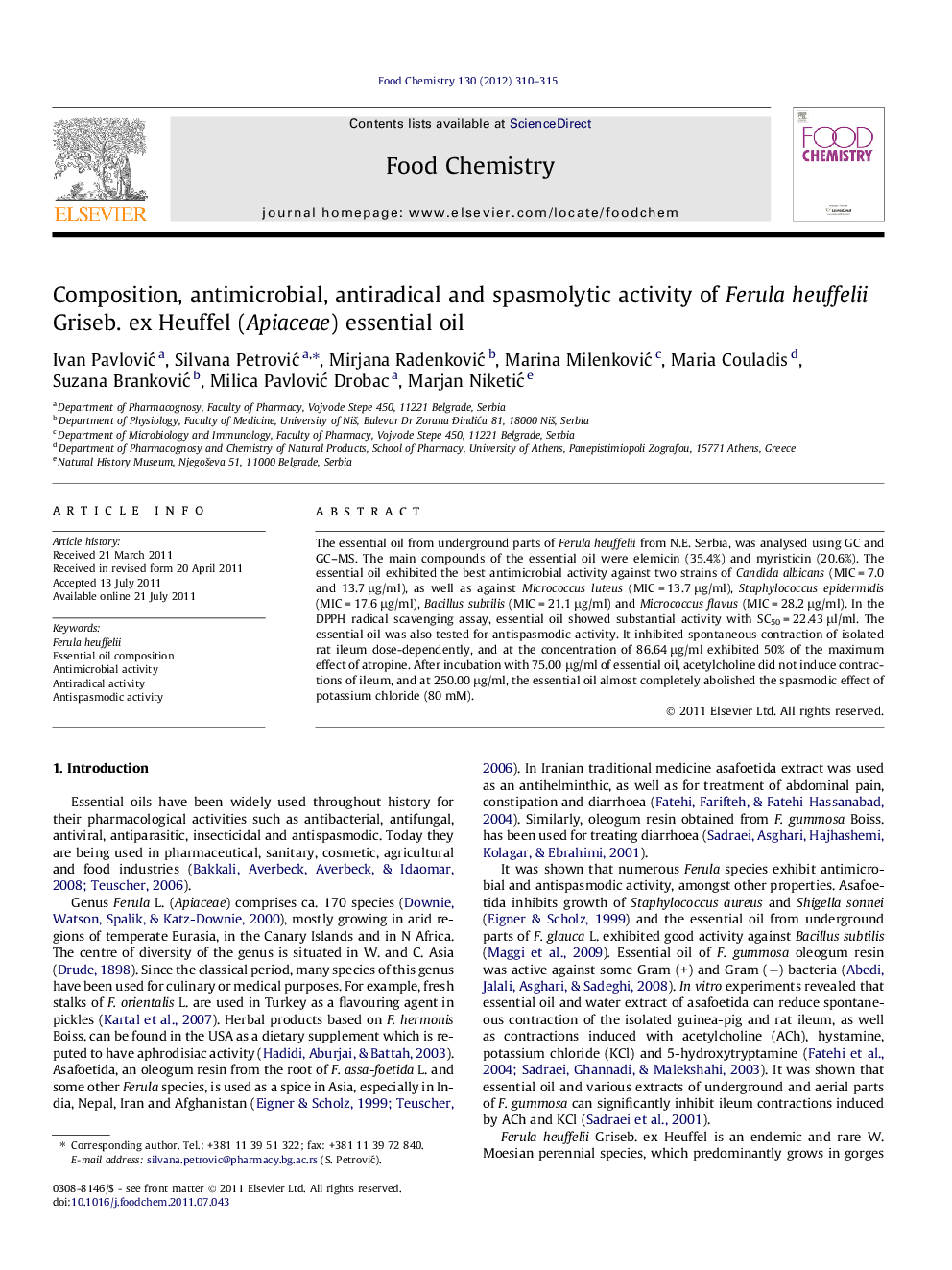| Article ID | Journal | Published Year | Pages | File Type |
|---|---|---|---|---|
| 1186053 | Food Chemistry | 2012 | 6 Pages |
The essential oil from underground parts of Ferula heuffelii from N.E. Serbia, was analysed using GC and GC–MS. The main compounds of the essential oil were elemicin (35.4%) and myristicin (20.6%). The essential oil exhibited the best antimicrobial activity against two strains of Candida albicans (MIC = 7.0 and 13.7 μg/ml), as well as against Micrococcus luteus (MIC = 13.7 μg/ml), Staphylococcus epidermidis (MIC = 17.6 μg/ml), Bacillus subtilis (MIC = 21.1 μg/ml) and Micrococcus flavus (MIC = 28.2 μg/ml). In the DPPH radical scavenging assay, essential oil showed substantial activity with SC50 = 22.43 μl/ml. The essential oil was also tested for antispasmodic activity. It inhibited spontaneous contraction of isolated rat ileum dose-dependently, and at the concentration of 86.64 μg/ml exhibited 50% of the maximum effect of atropine. After incubation with 75.00 μg/ml of essential oil, acetylcholine did not induce contractions of ileum, and at 250.00 μg/ml, the essential oil almost completely abolished the spasmodic effect of potassium chloride (80 mM).
► We analysed essential oil from Ferulaheuffelii underground parts. ► Composition was analysed by GC and GC–MS and elemicin was the main compound. ► Good activity against Candida albicans and Gram (+) bacteria was noted. ► Essential oil showed substantial anti-DPPH activity. ► Good spasmolytic activity of essential oil was demonstrated in vitro.
